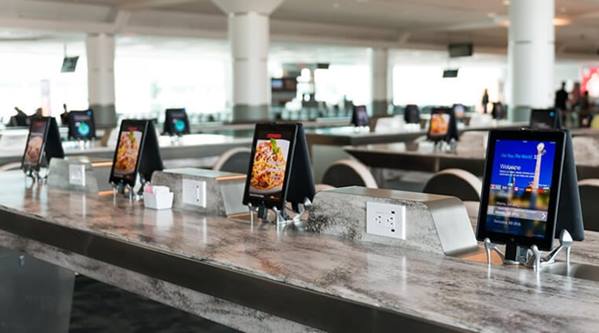
Advancements in technology have made a tremendous impact in every field. Quick-service restaurants, too, benefit from new tools, devices, and applications that improve their efficiency while keeping customer satisfaction high.
Today, you’ll find everything from parking lot self-service kiosks to scannable QR codes at quick-service restaurants. To keep pace in this industry, you’ll have to stay up to date and thoughtfully consider what technology your restaurant needs.
1. Mobile Ordering
Business Insider predicted that by 2020, mobile ordering will become a $38 billion industry and will account for 11 percent of total quick-service restaurant sales. Instead of customers making their way to your restaurant, they can make a phone call and have their food delivered.
Apart from calling, mobile apps also make it easier for customers to place orders and make payments online. An upgrade to mobile ordering will encourage customers to order from all around the city, which means more customers for you.
2. Scheduling Software
Restaurant Scheduling software automates the management of employees’ schedules, events, and resources. For example, if an employee asks for sick leave, the software automatically appoints another employee to work in their place. This type of software eliminates human error and also removes any personal feelings from the processes of delegating hours to employees.
3. Headsets, Intercoms, and System Speaker
These hardware items are essential for communicating with staff and customers alike. While you may already have communication hardware, you may want to consider upgrading to newer models. Bluetooth headsets are wireless and retain a longer charge, while a high-quality drive-through speaker system lets employees hear customers’ orders more clearly.
4. Table Tops and Kiosks for Ordering
Tabletop kiosks are revolutionizing quick-service restaurants because they let customers create and customize orders in no time. Small kiosks set up on a tabletop with a stand and have a tablet attached where customers can access menus, add items, add-ons, customizations, and provide instructions for their orders. The kiosks also process payments.
This technology lets customers browse through menus and create customized orders on their own and frees up employees so they can focus solely on customer satisfaction.
5. Digital Point of Sale System
Over the years, POS systems have improved dramatically. New models aren’t only faster to use, but they have handheld hardware and allow customers to create orders and make payments. Older models had limited features, but newer models have unique features such as touch screens, cloud-based data storage, cash drawers, platforms for online ordering, and tools to process various payment types.
6. Artificial Intelligence
Restaurants now use AI to help their restaurants run smoothly and grow. For example, AI chatbots and apps answer customer queries while AI-integrated kiosks tend to customers for shorter waiting times. Apart from this, recommendation engines help customers make meal choices according to their preferences.
7. Digital Inventory Tracking
Software that keeps track of digital inventory isn’t just a time-saver, it also reduces waste and cuts costs. It keeps records of produce and ingredients whenever new stock comes in and informs you once stock nears depletion. The software also calculates what exact supply quantities you will require so that you don’t fall short or waste resources on overstocking.
Scaling Up Your Restaurant with New Technology
Any technology that improves customer service, efficiency, or scale of operations will help your business grow a wider customer base and bring in more profit. While investing in new tech software and hardware may seem like small changes, having the right technology can provide your restaurant the efficiency boost it needs to grow.




